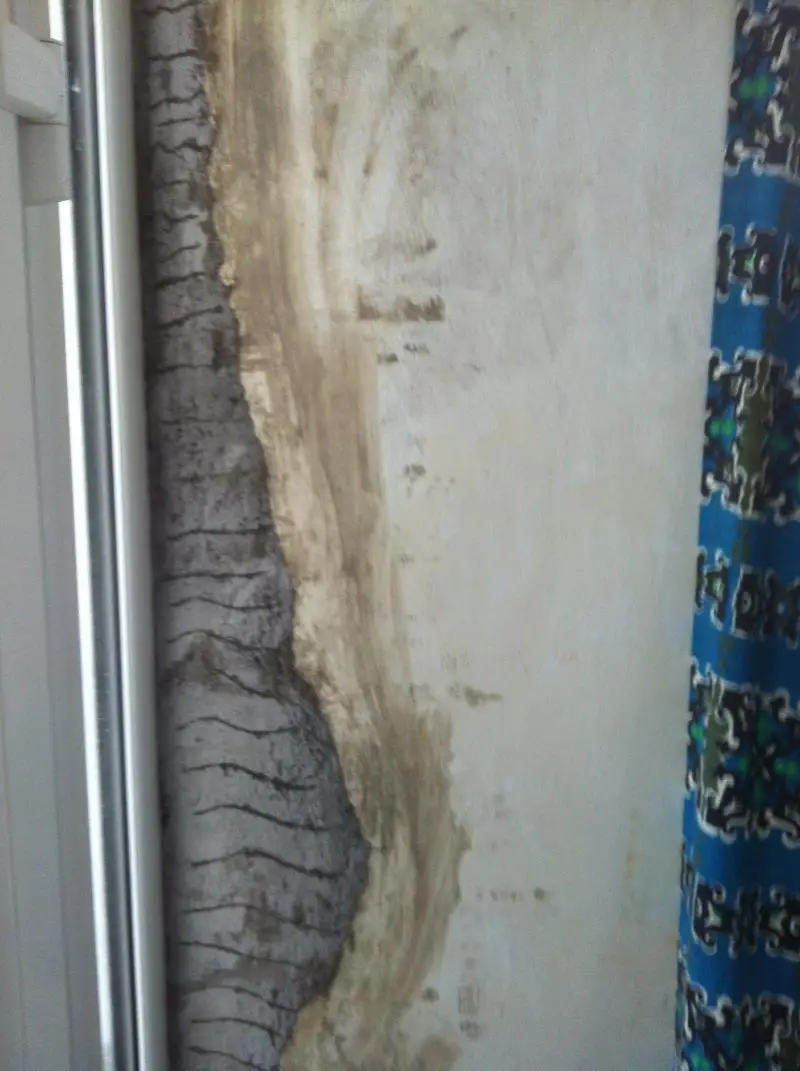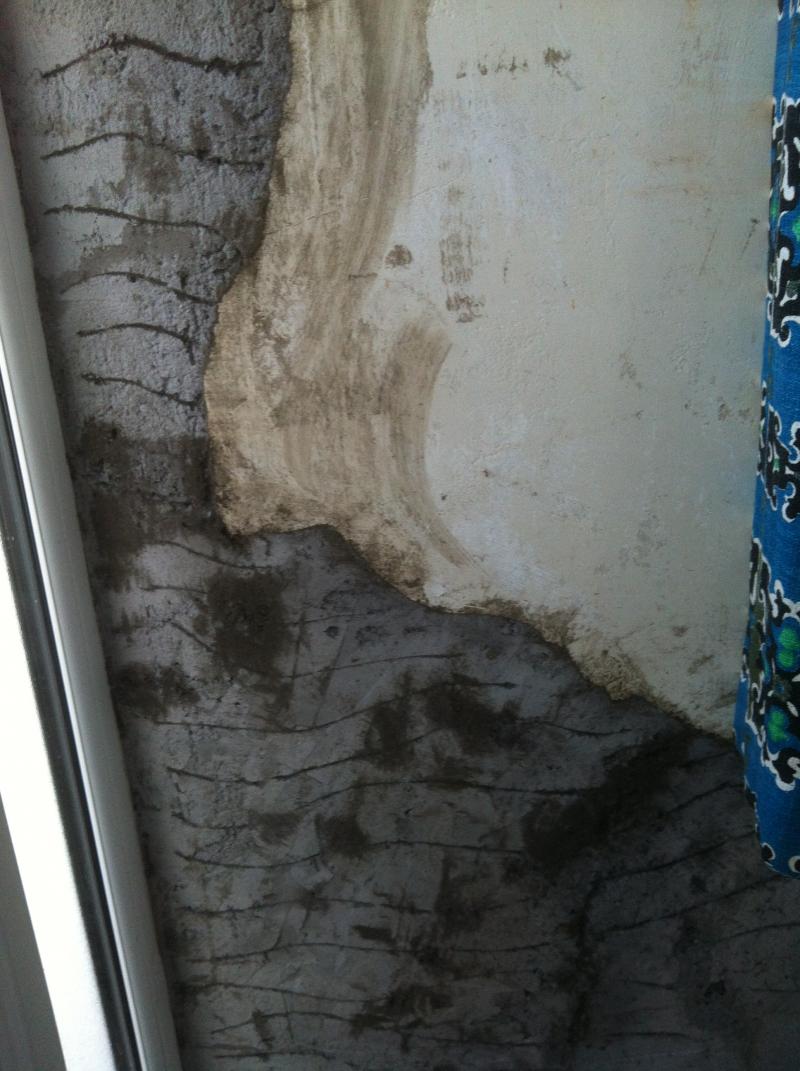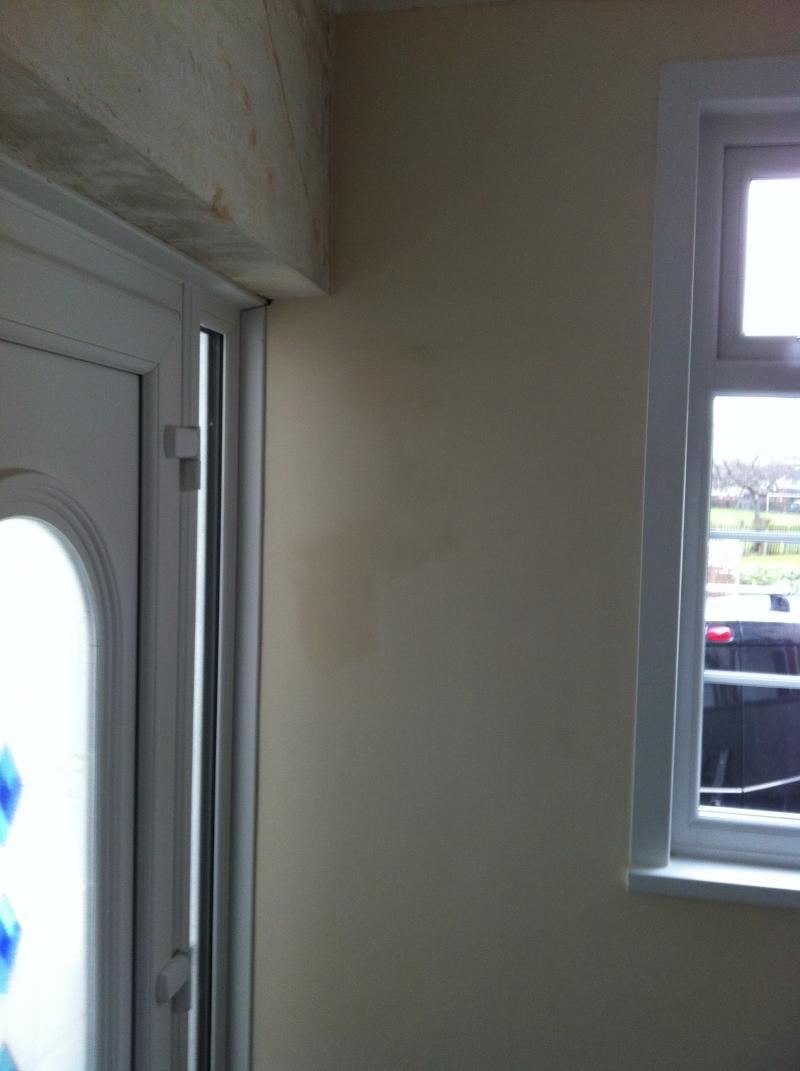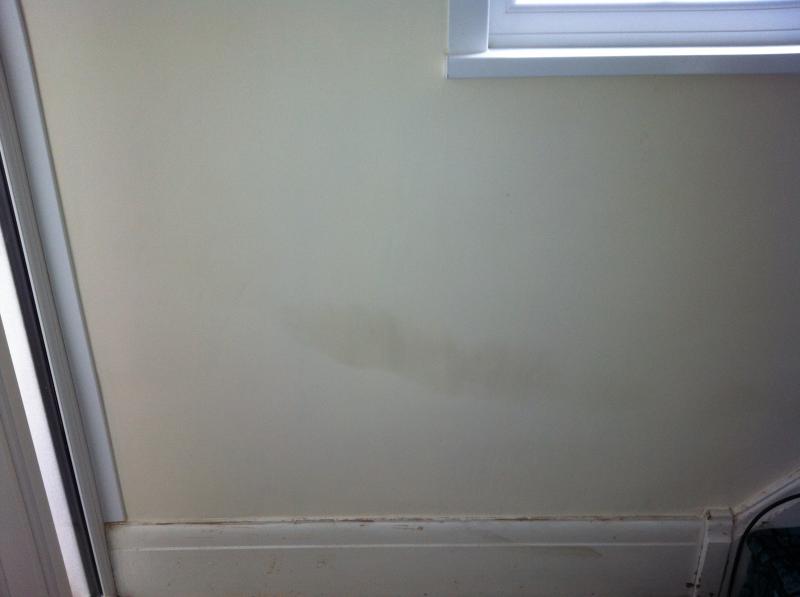A while ago I repaired the plaster on a wall where a leak had caused damage. I went back to brick on the damaged area and put a sand and cement backing then pva and skimmed with two coats of multi. This was my first attempt at plastering so it's far from perfect but I was happy enough after a bit of filling and sanding. After a few weeks of drying I painted with a mist coat then 2 coats of non vinyl emulsion. Today I have been stripping wallpaper from another wall in the same room which filled the room with steam and it seems the moisture is being sucked into my plastered wall. Looks like into the lime plaster directly above and to the side of my repair. Can anybody advise me why this is and what I should do. Is it salts in the old plaster sucking moisture in ?
Original repairs :
Damp plaster :
I had noticed a very slight damp patch before today but the steam has made it 1000 times worse.
As a first attempt I half expected to have to pull it all off and start again anyway but if I have to do that I don't want the same thing to happen next time.
Thanks if you can help !
Original repairs :
Damp plaster :
I had noticed a very slight damp patch before today but the steam has made it 1000 times worse.
As a first attempt I half expected to have to pull it all off and start again anyway but if I have to do that I don't want the same thing to happen next time.
Thanks if you can help !





